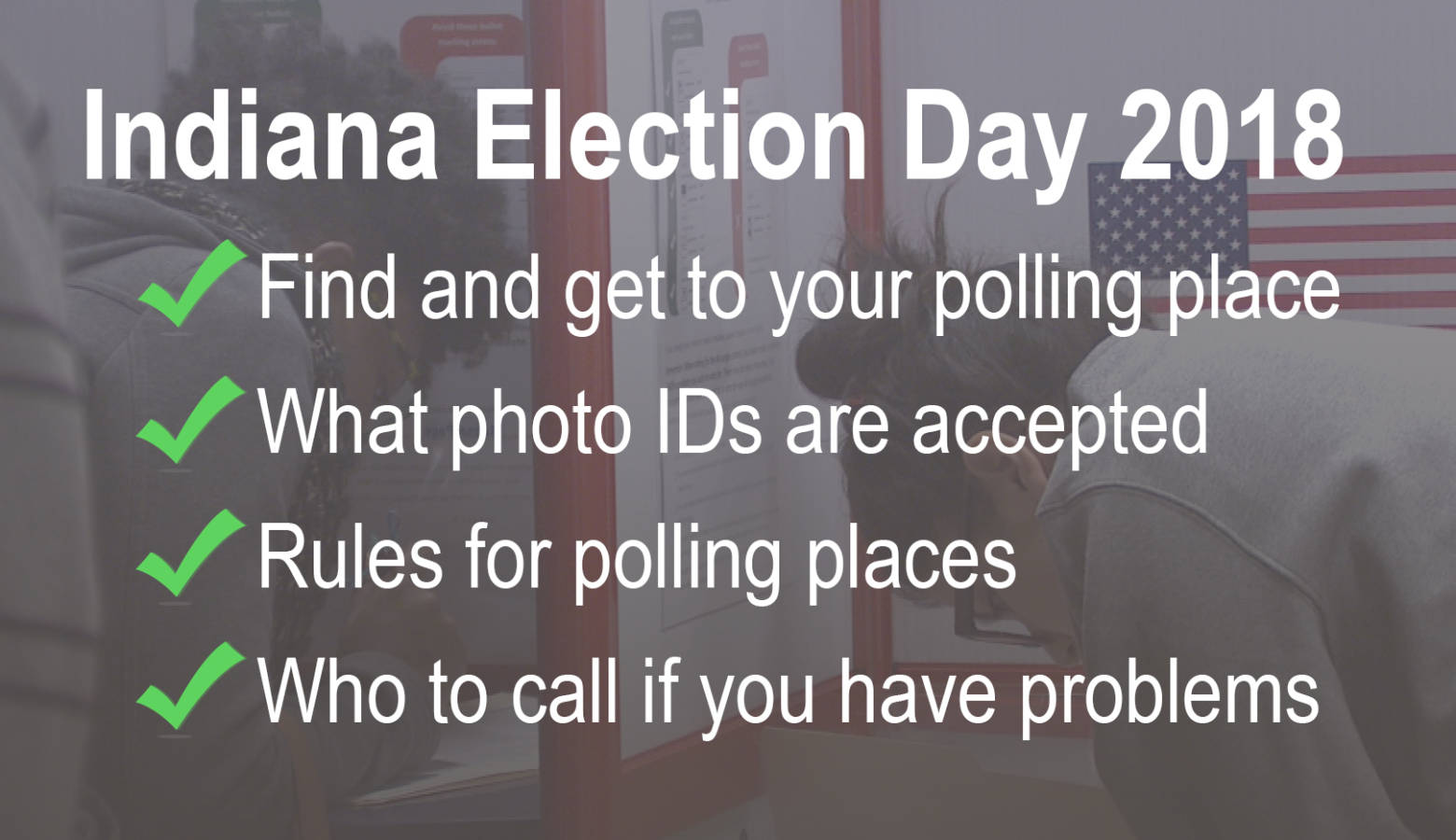What You Need To Know About Voting In Indiana

Hoosiers headed to the polls next week can vote from 6 a.m. to 6 p.m. Tuesday in an election that will decide a U.S. Senate seat, several statewide positions, many local-level races and a ballot proposal to amend the state constitution.
Here’s what you need to know before heading to the polls:
Make sure you’re registered to vote in Indiana
Most Indiana residents who are over 18 years old and U.S. citizens are eligible to cast a ballot. You must have lived in your precinct for at least 30 days prior to the election and be registered to vote. Voter registration for the November election ended Oct. 9. Check to see if you’re registered here.
Find out who’s on your ballot
Inform yourself before you vote by finding out who’s on your ballot. You can learn more about candidates on our elections website.
Getting to your polling place
Make sure you’re heading to the right place on Election Day. You can find your polling place here.
Read More: More Indiana Counties Switching To Voter Centers Instead Of Polling Places
This year, BuzzFeed and ride-sharing service Lyft are offering customers a 50 percent discount on a ride to vote. You can claim the promo code here. Lyft also plans to offer free rides to “underserved communities” through nonpartisan partners like Voto Latino and the League of Women Voters.
Ride-sharing service Uber is similarly offering $10 off a single ride to the polls on Election Day, as long as riders choose the cheapest Uber option available.
Bring an accepted photo ID
You must bring a photo ID issued by the State of Indiana or the U.S. Government when you vote. The ID must display an expiration date and the name displayed must conform to the name on your voter registration.
Examples of accepted forms of ID included a driver license, U.S. passport, Indiana photo ID or Military ID. College students can use IDs issued from state schools if they meet those requirements.
Read the Indiana Voter’s Bill Of Rights
To ensure you don’t encounter any problems when you cast your ballot, read the Indiana Voter’s Bill Of Rights. It explains how you might be eligible to vote if your name doesn’t appear on a poll list.
Disability hotline available to help with problems
The Indiana Disability Rights office will have attorneys on call during voting hours on Election Day to help with issues like:
- Lack of accessible path from the parking spot/drop off point to the voting booth
- Stairs or non-paved surfaces such as gravel or grass as the only path to the polling location
- Lack of at least one doorway wide enough for a wheelchair to get through
- Lack of at least one set of automatic doors or someone available to open doors
- Lack of a functioning, accessible voting machine
- Lack of poll workers available who know how to operate the accessible voting machine
Hoosiers who experience these or other problems can call the hotline at 800-622-4845.
Hoosiers are allowed to take ‘ballot selfies’
Although state law once prohibited taking a photo in a voting booth, Hoosiers are now allowed to take so-called “ballot selfies.”
State lawmakers passed the law in 2015, but after the ACLU sued the state over the ban, a federal judge struck the law down.
Open carry at Indiana polling places
Indiana allows open carry of firearms with a license in most places. And while state law prohibits firearms at certain locations, such as schools, carry restrictions at Indiana polling places can be case-by-case.
It is legal to carry a firearm into any polling place that is not one of the exempted locations.
‘Electioneering’ at Polling Places
At all polling locations in Indiana, it is illegal to engage in “electioneering,” which simply means expressing support or opposition to any candidate or political party or public question.
This includes something as simple as wearing a t-shirt or button with a candidate logo. It also applies to what might be considered “voter intimidation,” such as harassing voters headed into a polling place.
The rules apply to the polling place directly and to the “chute,” which is 50 feet from any entrance to a polling place.
As NPR reports, there are federal regulations that prevent voter intimidation, as well:
“[The regulation] allows normal poll watching, like rallying supporters to vote, but not anything aimed at voter suppression, like posting armed guards at polling locations or questioning people in an intimidating way before they vote.”
The same rules apply to all early voting centers and locations where voters can drop off absentee ballots.


